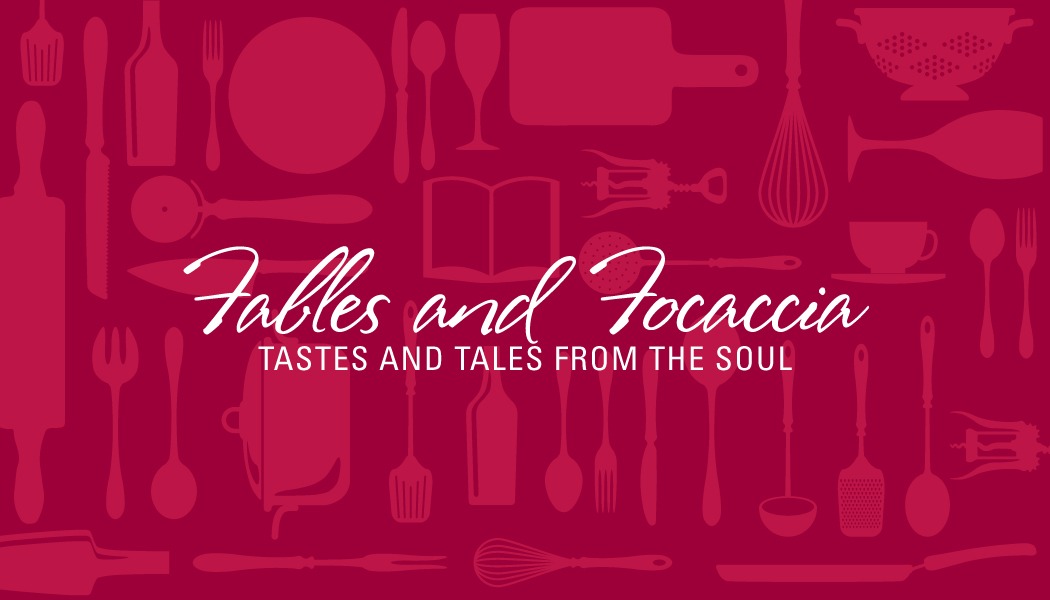Guest Blog Written By: Jenny Arena from Fables and Focaccia
It’s hard to believe that a food tradition would be born on Good Friday, typically a day of fast, but it is precisely on this day that my mother maintains one of my favorite traditions; the preparation of the Easter Sguta.
As in many cultures, this is a sweet bread that is made to celebrate the holiday, comparable to the Jewish Challa or the Portuguese Bolo Douce. Our sguta (as it is known in the particular dialect of my family’s town in Reggio Calabria) is a deliciously golden wreath with a chewy exterior and a moist anise-scented, melt-in-your mouth interior.
The process of making this traditional Easter bread takes 2 days and begins on Good Friday. Early in the morning I can recall my mother pulling out a huge plastic tub along with all her ingredients to begin the bread making. As a child it was fun to watch her getting her hands in the sticky dough and kneading it, and even more exciting was being able to get my hands in there as well. As I grew, I went from playing with the dough, to being able to knead it myself, and I have to admit that there is something so therapeutic and gratifying about connecting with the ingredients and feeling them between your fingers. It is simply amazing to see the transformation of a well of ingredients, eggs, flour and sugar, turn into a smooth and airy dough.
Once the kneading was done, the waiting began. The dough was covered up and set aside for a good part of the day to rise. As children, we were told that dough was being put to bed as my mother covered her large mixing basket with a heavy blanket. Once the allotted amount of time had gone by, the next step began. My mother would uncover a huge mass of risen dough, knead it down again and then begin to tear off pieces which would be rolled out and shaped. The shaping was always the best part and the one task we were allowed to help with. We formed braids and wreaths, small buns and even our initials, but the one shape that was always first, was the shape of a cross. In my eyes, it was an offering up to the Lord as part of the Easter celebration. That one cross would bless the rest of the bounty that formed a traditional part of our Easter table.
Another part of the tradition is working eggs into the shapes, an obvious symbol of the holiday and a tasty addition that would feed us at lunch on Holy Saturday.
Once the sgute had been formed, they were once again put to sleep for the night, after which I too would go to bed and dream of our wonderful sweet braided bread whose scent would come wafting through the house and awake us the next morning. It always seemed miraculous that these shiny glazed loaves were warm and ready to be eaten on Saturday morning, at which time we would break the Lenten fast by breaking the bread and dunking it into a caffe latte.
Later at lunch, we would once again partake in devouring the loaves only this time cracking open the eggs and eating them alongside homemade spicy soppressata and salty cheese. The sweet and savory combination of the meal is unmistakable. Over the years we have even discovered that the little golden buns made an incredible ice-cream sandwich or delicious vessel for Nutella as well.
The sguta has been a longstanding Easter tradition that I cherish and will continue with my daughters, hoping that it captures for them all the heartfelt memories that it does for me.
SGUTA
Ingredients:
12 large eggs
½ cup olive oil
½ cup white wine (at room temperature)
2-3 cups sugar (1 cup for every kilo of flour)
1 packet of dry yeast (80 gram packet of Fleischmann’s)
1 cup of warm water (to dissolve yeast) + 1 additional cup
3 kg all-purpose flour (approx. 1 kg for every 4 eggs)
1 packet Lievito Bertolini
1 pinch of salt
1 tsp. almond extract
1 tsp. anise extract
Additional whole eggs for decorating
Directions:
1. Beat the eggs and sugar together and then add remaining wet ingredients.
2. Measure the dry ingredients into a large mixing bowl and create a well for the egg mixture. Pour the wet ingredients into the well, then add the dissolved yeast and the additional cup of warm water and start mixing together the dough. Keep a bowl of warm water nearby to dip your hands into from time to time to help work with the sticky dough. Thoroughly knead the dough (approximately ½ hour) until you get a firm smooth dough. To ensure the proper consistency of the dough, cut it with a knife and check to see that there are tiny air bubbles throughout it.
3. Form into a large loaf and cover with a blanket and allow to rise (approximately 5-6 hours). Once the dough has risen, knead it again and form it into balls of dough to be stretched for shaping, keeping unused dough covered with plastic wrap to keep it from drying out. Form the dough into wreaths, braids, buns, being sure to weave in the whole eggs. Place the shapes onto baking sheets lined with parchment paper, cover and let rise over night. When ready for baking, brush the leavened braids with an egg wash and place in a preheated 275 degree oven. Bake until they are golden switching the loaves from the bottom to the top rack halfway through. Remove from oven, allow to cool and enjoy.
Buon Appetito!
For more from Fables and Focaccia be sure to check them out online
“LIKE” them on facebook and “FOLLOW” them on instagram, twitter and pinterest!

